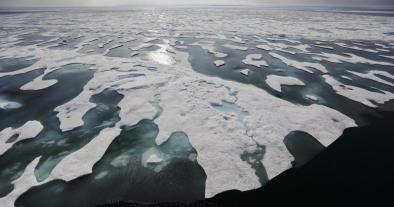Headline
Thanks to climate change, the Arctic is turning green
Arctic

Using 29 years of data from Landsat satellites, researchers at NASA have found extensive greening in the vegetation across Alaska and Canada. Rapidly increasing temperatures in the Arctic have led to longer growing seasons and changing soil for plants. Image: Cindy Starr / NASA’s Goddard Space Flight Center
Earlier this month, NASA scientists provided a visualization of a startling climate change trend — the Earth is getting greener, as viewed from space, especially in its rapidly warming northern regions. And this is presumably occurring as more carbon dioxide in the air, along with warmer temperatures and longer growing seasons, makes plants very, very happy.
Now, new research in Nature Climate Change[1] not only reinforces the reality of this trend — which is already provoking debate about the overall climate consequences of a warming Arctic — but statistically attributes it to human causes, which largely means greenhouse gas emissions (albeit with a mix of other elements as well)
Related Content
Science Source
| World Weather Attribution
Unusually high temperatures at the North Pole, winter 2016
Science Source
| Geophysical Research Letters
Accelerated increase in the Arctic tropospheric warming events surpassing stratospheric warming events during winter
S.‐Y. Simon Wang, Yen‐Heng Lin, Ming‐Ying Lee et al
Science Source
| Bulletin of the American Meteorological Society
EEE 2016: CMIP5 Model-based Assessment of Anthropogenic Influence on Highly Anomalous Arctic Warmth During November–December 2016
Jonghun Kam, Thomas R. Knutson, Fanrong Zeng et al
Headline

Dec 12, 2017 | Mother Jones
The Arctic is warming faster than at any point in the past 1,500 years


